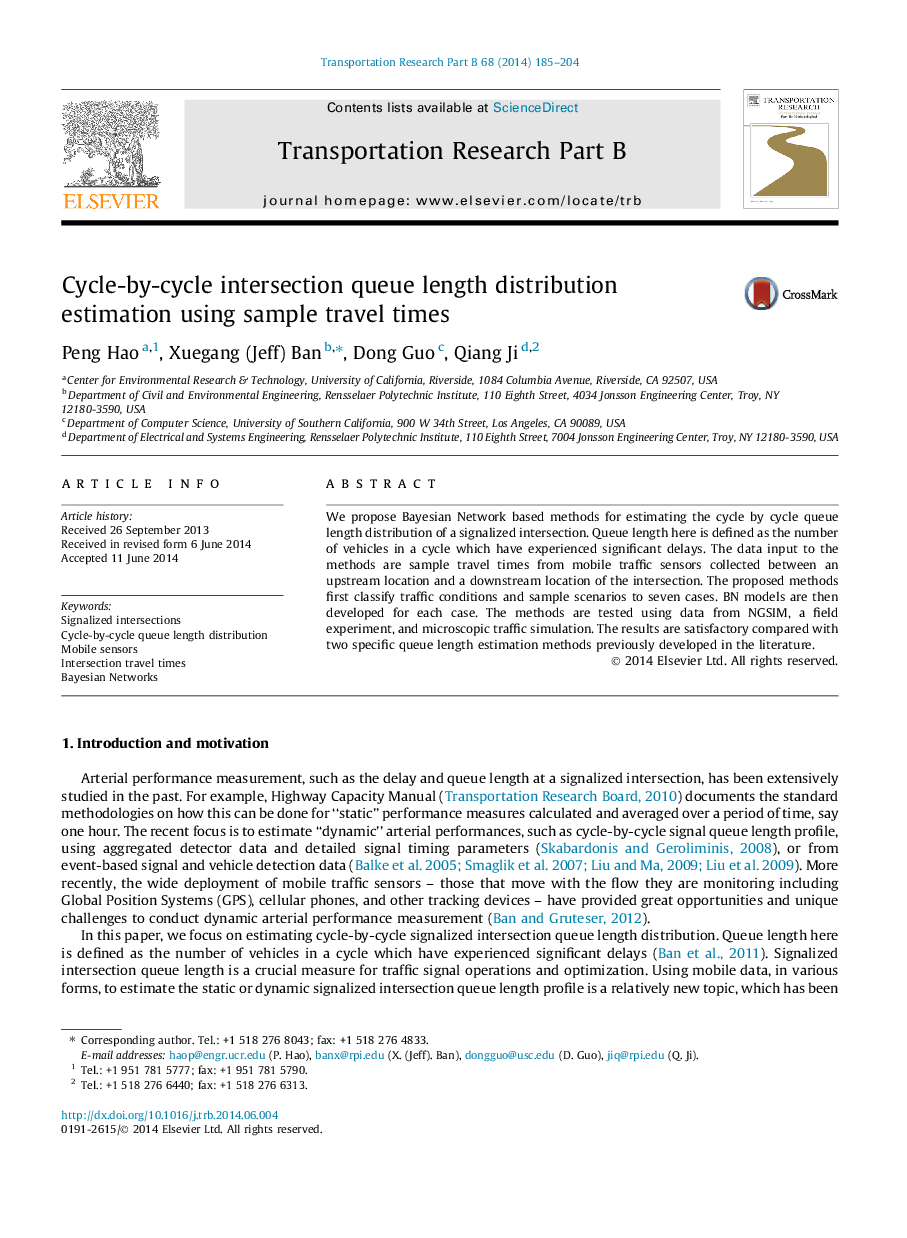| Article ID | Journal | Published Year | Pages | File Type |
|---|---|---|---|---|
| 1132000 | Transportation Research Part B: Methodological | 2014 | 20 Pages |
•Sample intersection travel times can categorize a cycle into seven (7) cases.•Bayesian Network models are constructed for each case to infer queue length distribution.•Queued vehicles contribute directly to the estimation of queue lengths.•Free flow vehicles are essential to the selection of proper model structure.•Methods work better for congested intersections than non-congested ones.
We propose Bayesian Network based methods for estimating the cycle by cycle queue length distribution of a signalized intersection. Queue length here is defined as the number of vehicles in a cycle which have experienced significant delays. The data input to the methods are sample travel times from mobile traffic sensors collected between an upstream location and a downstream location of the intersection. The proposed methods first classify traffic conditions and sample scenarios to seven cases. BN models are then developed for each case. The methods are tested using data from NGSIM, a field experiment, and microscopic traffic simulation. The results are satisfactory compared with two specific queue length estimation methods previously developed in the literature.
